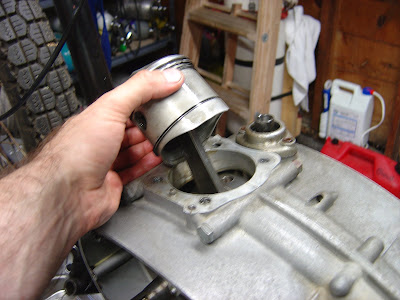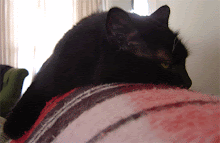
I had been dreading this for quite some time, but it turned out that it wasn't bad at all. Over the last few nights I worked on cleaning and inspecting the the transmission, and everything was perfect. So tonight I installed the crank and the mainshaft in one half of the crankcase. I installed the mainshaft so I would have something to tap on with the mallet to separate the crankcase halves after they were torqued together.
I needed to shim the crankshaft so there was zero endfloat while it still spun freely. The crankcase gasket needed to be accounted for, but I didn't want to set up the cases with the actual gasket in case I damaged it somehow and would need to buy a new one. The gasket was .010 inches thick, so I spent a bit of time micing every sheet of paper around the house to find something compatible. I was surprised how thin most paper was, but eventually I found some manilla folders that were exactly .010" thick. I cut them into strips to serve as the gaskets during mock-up. The pic is a bit blurry, but you get the idea...
I then installed the other half of the crankcase and torqued the fasteners. Surprisingly, on the first try I got zero end float with a free-rotating crank. Of course, it was the same thickness shim as was installed before the crank rebuild, so I probably wasn't that lucky.

I then re-separated the crankcases and installed the transmission in one half, along with the crankshaft. I shifted through all the gears to make sure everything worked smoothly. Yes, I'm doing this on the kitchen stove, as it's REALLY cold in the garage. And yes, Tami is out of town.

The other side of the crankcase got the lower bevel gear installed.
Once the crankcases were put together I again shifted through all five gears to make sure everything was kosher. I then spent a little over an hour trying several different shim sets to set the final gear mesh/lash on the lower bevel. I finally settled on the same shims that I removed when I disassembled the motor. These shims allowed a little bit of backlash, but they didn't cause any sticking through many rotations, and they resulted in the factory grind marks to align perfectly, so I left it at that.




















































